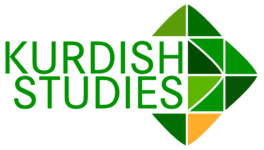Biosynthesis And Wound Contraction Efficacy Of Zinc Oxide Nanoparticles Using Leaf Extract Of Syzygium Cumini (Linn.)
Bisma Rauff
Asma Ahmed
Rehana Badar
Samra Hafeez
Bilal Ishaq
Nadeem Iqbal
Abstract
Current study was designed to evaluate the wound healing potential of leaf extracts of Syzygium cumini (Linn) and effectiveness of zinc oxide nanoparticles against wounds. Number of studies are already available on the plant extracts and nanoparticles against wound healing, focus of present study highlights the role of S.cumini for healing and presents the comparative analysis when drug was used at mg/ml and at nano range. Bio-fabricated zinc oxide nanoparticles (BZnO NPs) were synthesized via green route and were further characterized using UV-Vis spectroscopy, FTIR, XRD and SEM. Efficacy of these NPs were assessed against excision wounds using albino Wistar rats (both genders, 250-300 g) and the data was recorded in the interval of seven, fourteen and twenty-one days. For the synthesis of zinc oxide nanoparticles 10 mL of 1 mM ZnSO4.7H2O was mixed with 3 mL of S. cumini leaf extract, and the reaction mixture was stirred at 80°C using magnetic stirrer for 2 hours. A clear change in color of the mixture (pale yellow to whitish) confirmed the synthesis of BZnO particles while UV-Visible analysis presented a sharp peak at 378 nm which confirmed the synthesized particles in nanoscale. The hexagonal wurtzite structure of BZnO nanoparticles through XRD analysis gave distinct peaks at 2θ position. The average size was around 70 nm with irregular shape of particles. Among all extracts, aqueous extract of S. cumini Linn. was found excellent reducing agent for the synthesis zinc oxide nanoparticles, while statistically analyzed results (at p≤ 0.05) showed that among all plant, after day 07, day 14 and day 21 also showed that S. cumini (Linn.) (42.5 %, 87.5 % and 100 % respectively) showed significant wound contraction in female rats as compared to male rats, while its n-Hexane extract has least significant effects. Nanoparticles have wound healing potential at all concentration, but it was maximum wound contraction after 14 days of biogenic nanoparticle application which remained continued till third week of particle application. Current study can be used as basic study for the isolation of active compound behind it so that it could be used for the formulation of curative bandage to cure excision wounds.
